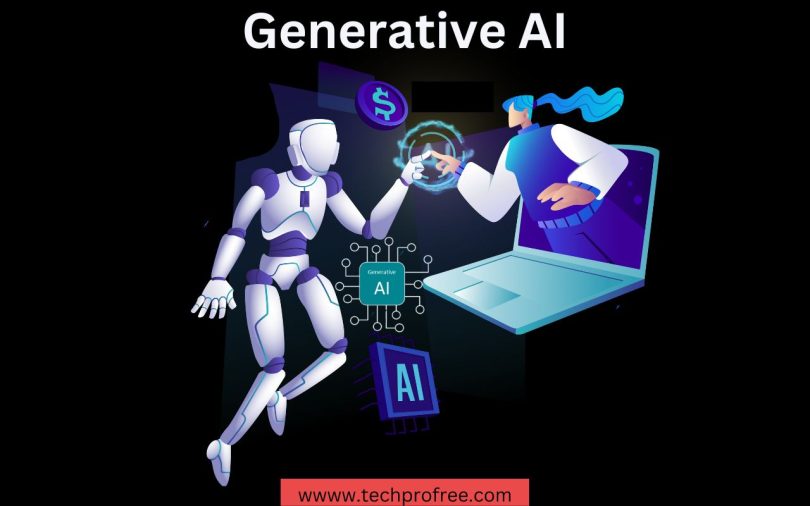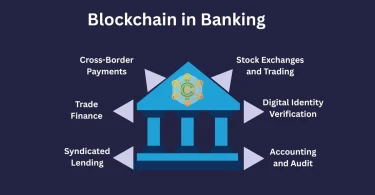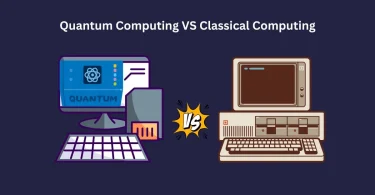What is Generative AI?
Generative AI is a general description for any type of AI whose output can include new texts, images, or videos. This will be a technical term describing how this version of AI uses patterns from the training data that generate new output with similar statistics.
Generative AI (genAI) systems rely on prompts to guide their content creation using the transfer learning method to improve efficiency. The initial genAI models were customized for specific data types and uses, such as DeepDream by Google which was designed for image editing and was excellent at creating appealing visual effects. However, due to this image processing based architecture, it was not flexible enough and could hardly be applied to other types of data.
Multimodal models have increased exponentially in the generative AI landscape with their ability to work with different prompts that produce diverse data types. However, it should be mentioned that even though not novel as such, generative AI can be traced back to the sixties when chatbots emerged. After that, in 2014, a new form of machine learning algorithms named as generative adversarial networks (GANs) transformed the development. Generative AI, thanks to GANs, could produce extra realistic-looking images, videos and audio recordings.
Transformative Advances in Generative AI:
Two pivotal recent developments, explored subsequently, have played a crucial role in thrusting generative AI into the mainstream: the language models that they created and the transformers themselves. The transformers machine learning technology made training the ever-larger models possible without having to manually label each set of data. This innovation helped training models to process larger volumes of text producing more profound responses. Transformers also developed concept of attention that enabled the models to connect words with each other across many sentences and even pages, chapters and books. This attention model was also applied in the analysis of codes, proteins, chemicals and DNA.
The rapid development of the large language models (LLMs), with billions or trillions of parameters, has seen the emergence of new-age generative AI models that write interesting text articles, create realistic images and even improvise sitcoms. This development in AI gives teams the ability to produce multi-media content ranging from text, graphics and videos just like Dall-E which auto-generates pictures by text description or captures texts from pictures.
While these breakthroughs have been achieved; a number of problems arise from using generative AI in text creation and photorealistic, stylized images. However, the demonstrated progress suggests that generative AI can revolutionize enterprise technology with the power to code, make drugs, design products, optimize business processes and reshape supply chains.
Comparison of Generative AI with traditional AI:
Essentially, the difference in the hierarchical relationship between AI and generative AI portrays their respective functions.
AI entails machine construction that was initially meant for carrying out activities that only could be done by the human brain. Perception, logical reasoning, decision-making and NLU are some of the common tasks performed in these types of jobs.
One branch of AI is ML, which is all about creating specific algorithms that allow computers to draw conclusions or take actions automatically after being provided with raw data.
Generative AI is a part of ML which focuses exclusively on the formation of new data samples that accurately copy the existing ones.
Traditional AI uses rules-based ML models trained on one data type for one task, usually providing only a single pre-defined answer.
On the other hand, generative AI relies on DL methods and is able to develop outputs that fall into an appropriate space. This attribute gives it the ability to serve as the backbone for diverse tasks like image and text prompts for ChatGPT.
Generative artificial intelligence is already used for creating digital art, virtual environments design, music composition, writing of texts, drugs discovery, computer code forming and production of real videos and audio.
Mechanics of Generative AI:
Generative AI utilizes neuron networks that recognize trends on data and produce novelty. They build and train neural networks that mimic their content. This is exemplified by a network that can be trained using text data, which, in turn, can create poetry, narratives, complex equations, and even program codes.
Quality of output depends on such issues as quality of training data, model architecture, training procedures, user responses etc. A model learns to understand sophisticated patterns and recreate them through high-quality and varied training data. In contrast, the application of inconsistent or biased training data can only produce incorrect results.
Feedback during training is essential, it adjusts internal parameters and facilitates methodologies and evaluation strategies.
Usefulness/quality with respect to outputs is influenced by complexity in design of a model. Sometimes too narrow a framework could fail to account for the subtleties of context, and needlessly elaborate construction could focus on the unnecessary instead of the significant.
When prompted by users, models produce new data with respect to the desired outcome, intent of the model and situation. For example, direction of tone and length could formulate a prompt for a cover letter and musical genre and tempo direction a prompt for an audio clip.
Generative AI Models:
The mixed AI algorithms in generative AI models integrate the data that they represent as well as process it. For example, text generation uses natural language processing in converting raw characters into numbers with regard to sentences, parts of speeches, entities and actions. Similarly, pictures are rendered into visual components comprising of vectors. However, it should be noted that such encoding practices can subtly incorporate biases, racism, dishonesty, or puffery found in the training data.
Developers choose certain neural networks to create new responses after making a decision about representation. GANs and VAE have proven effective when producing realistic human faces or artificial data to train AI or duplicity of someone.
The recent breakthroughs in transformers such as GPT and BERT from open AI and Google Alpha Fold have contributed an advancement towards neural machines which can carry information from image to text sequence.
Using Neural Networks for Transforming Generative AI:
While rule-based and, later, expert systems were employed in systematically creating content since the dawn of AI, their usefulness was limited. They were replaced by neural networks who emulate a human brain that learns those rules from patterns on old datasets. While they were conceived in the 1950s or 1960s, neural networks had limited computational power and small sets of data. Not until 2030 did it become possible to use neural networks for generating content, when big data started emerging and there were upgrades made on machines?
Researchers began to use the technique on distributed neural networks as soon as they were able to parallelize them across GPUs aimed at gaming. Advances of the past ten years, such as Generative Adversarial Networks or transformers, made it possible that AI-generated content can reach high standards.
Tips for Crafting GenAI Prompts:
A prompt is an input statement which directs genAI model response towards matching the desired context and purpose. Whether for text, image, audio, or video prompts, certain best practices uphold fundamental principles:
Be Precise: Particularly, more specific and elaborate queries elicit customized answers.
Provide Context: Hence, context reduces ambiguity and helps in matching of the outputs to the purpose intended by the prompter.
Avoid Leading Questions: First, prompt quality benefits from objectivity and absence of leading information.
Reframe and Iterate: In case the initial feedback is not satisfactory, reformulate the prompt or resend it.
Adjust Temperature Settings: Adjust temperature settings to achieve randomness or determinism.
Limit Response Length: The outputs should be kept concise and constraints like word counts or duration limits specified.
Experiment with Multiple Prompts: Provision of alternative attempts or splitting questions can improve the utility.
Review and Revise Outputs: For the edited, usable genAI responses, post-generation review is assured.
Types of Generative AI:
Different types of generative AI are designed to capture different patterns and features in the training data for specific tasks. Some of this key architecture includes the generative adversarial networks, also referred to as GANs, the variational autoencoders also referred to as VAEs, transformer architectures and finally the generative pre-trained transformations referred to as GPTs.
Generative Adversarial Networks (GANs):
Structure: The generative adversarial network is comprised of a generator and a discriminator engaged in a strategic guessing game.
Operation: The generator generates a data point, while the discriminator distinguishes real data points from fake ones.
Objective: Iterative processes seek to progressively deceive the discriminator with higher accuracy.
Variational Autoencoders (VAEs):
Components: It consists of an encoder and a decoder.
Process: Encoders reduce input data to a set of important characteristics in latent space. Decoder produces new data based on representation.
Objective: Maintain essential qualities on being compressed and reconstructed.
Transformer Architectures:
Composition: Layers stacked with self-attention and feed-forward networks.
Functionality: In self-attention, elements of a sequence are given an opportunity to consider relations before feed-forward network processes outputs and provides transformations.
Learning: Processes the input sequencies into layers to capture relevant data for the task.
Generative Pre-trained Transformers (GPTs):
Implementation: The specific implementation of the transformer architecture.
Training: Capturing linguistic patterns through initial pre-training in extensive text data.
Fine-tuning: Training adapted for specific uses, after the foundation.
Hybrid Variations: Hybrid architecture for generative AI is researched for better speed, reliability and accuracy.
Use Cases for Generative AI:
Chatbots: To offer assistance and address technical queries.
Deepfakes: Mimicking people or specific individuals.
Dubbing: Developing multiple languages dubbing for movies and academic lectures.
Content Generation: Email responses, dating profiles, resume writing and term papers.
Art Creation: Art in the different styling approaches to generate photorealism.
Product Demonstration: Enhancing presentations of product features through videos.
Drug Discovery: Developing and testing novel drug compounds.
Designing: Product design, building design, or chip designs.
Music Composition: Composing of scores in particular styles and colors.
The flexibility of generative AI enables it to be applicable in many areas hence becoming user friendly for any domain users.
Benefits of Generative AI:
Generative AI provides numerous benefits for a spectrum of fields, enabling analysis, comprehension and material creation.
Key benefits include:
- Automation of Content Creation
- Manually automating the content creation process.
- Efficient email responses
- Making email responses easier.
- Responding to some technical questions better.
- Creating lifelike representations of individuals.
- Organize complicated pieces of information in a simpler way by forming comprehensible stories.
- Automating simplification of content generation process in certain ways.
Limitations of Generative AI:
Generative AI, despite its potential, faces notable limitations, including:
- Challenges in continually identifying the origins of created material.
- Issues regarding assessing bias in original sources.
- Inaccuracies camouflaged by realistic sounding content.
- Tuning in difficult circumstances is why.
- Bias, prejudice, and hate speech can be bypassed.
Use Cases across Industries:
Generative AI technologies have broad applications across industries:
Finance: Contextualizing transactions of individuals with their histories and improved fraud detection.
Legal: Drafting and reading of contracts, the analysis of evidence and argumentation advice.
Manufacturing: Data integration, finding defective parts and root causes.
Media and Film: Actors voices with economical content production and multilingual translation.
Medical: Identifying promising drug candidates for further evaluation.
Architecture: Rapid creation of prototypes and quick changes.
Gaming: Creating game content and designing levels.
Future of Generative AI:
Generative AI is poised for significant advancements:
Widespread Adoption: More and more applications, encouraging researchers for safe usage.
Educational Resources: Provision of training programs to developers and business users respectively.
Improvement in Tools: Better tools for detecting AI-created text, images and videos.
Evolution in Capabilities: Advances in Translation, Drug Discovery, Anomaly Detection and Content Generation
Integration into Existing Tools: The seamless inclusion of generative AI abilities into existing systems is changing the work environment.
Impact on Various Domains: Further changes that are impacting grammar checkers, design tools, training tools and so on.
Generative AI can change processes of work, reinvent knowledge and further develop artificial intelligence.
Generative AI’s Impact on Employment:
Generative AI presents both transformative potential and ethical concerns in the workplace:
Generative AI could displace some human jobs and yet create new ones also. Choosing training data, specific architecture for a task, and evaluating the model’s output still require human involvement.
The writer’s strike in Hollywood was also connected with AI, including generative AI. The use of AI writing tools to write and rewrite scripts raised fears about the loss of jobs and the quality of the content. Settlement was done and some standards were developed for reasonable usage of generative AI, taking into consideration all issues.
Ethical Concerns of Generative AI:
The way generative AI can produce misleading responses poses a moral dilemma. Spreading misinformation is also contributed by deepfake creators/spreaders.
Some organizations limit generative AI use to avoid deliberate and non-volitional exposures of data. Multiple issues arise with respect to integration into third party applications and concerns about unauthorized content generation that may imply reputational damages.
This makes it expensive in terms of both the computational power and the energy spent on training large generative models. With the wider utilization of generative AI, even in inference mode, the environmental effect grows more significant.
There is a question of ethics in web scraping, specifically when it comes to intellectual property violation. The publishers advocate for clear, agreed and responsible data-gathering processes.
Conclusion:
The implications of generative AI are becoming more evident as it advances. The versatility of the technology is shown from its ability to revolutionize content creation to fraud detection in finance. Nonetheless, there are many challenges that still exist such as bias inherited from training data, difficult tuning for certain scenarios, and the importance of responsible data collection processes. Finally, though Generative AI has high prospects to rejuvenate enterprise technologies, issues of ethical application, environmental impacts and the coexistence of AI and human creativity demand responsible innovation. The continuing discourse among stakeholders like governments, industries, and individuals is vital in ensuring the future of generative AI does no harm while giving the maximum benefits.




Leave a Comment